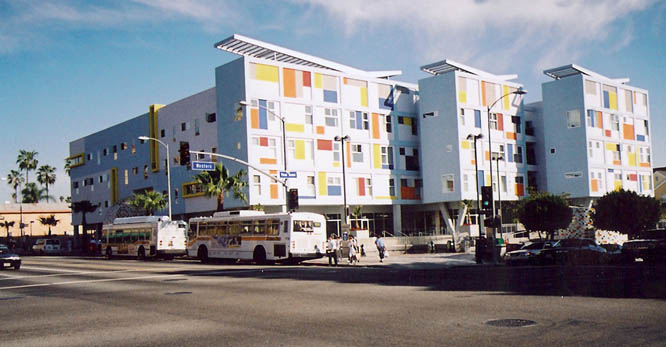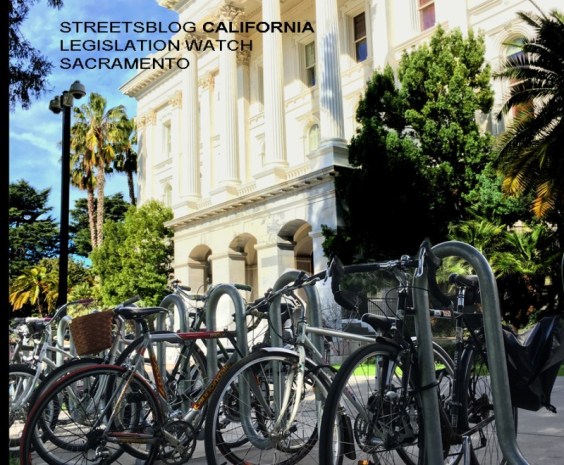Turning the Queen Mary: A Conversation with HUD, Part II
11:47 AM EST on November 24, 2010
How do three massive governmental bureaucracies (HUD, DOT, and EPA) nimbly change their approaches and procedures to work together on the Partnership for Sustainable Communities? How can communities ensure that transit-oriented development doesn’t end up pricing out existing residents? How can recipients of federal planning grants move from planning to implementation of livability strategies?
Streetsblog met with Mariia Zimmerman, Deputy Director for Sustainable Communities at HUD, to talk about these questions. Brian Sullivan from the Office of Public Affairs also joined us for this conversation. Below is the second part of the interview -- see the first part here.
Streetsblog: How hard has it been to refocus big bureaucracies like HUD, DOT, EPA on sustainability? Is just this little piece over here focused on sustainability or is it permeating the entire agency culture?
We didn’t even have [DOT's] phone number a year ago.
Zimmerman: I do feel like we are permeating the culture, and I would agree they’re all three big battleships so it’s a heavy lift. But we’ve certainly gotten the directive from our secretary that he wants to see our whole $44 billion program be about sustainability. It’s not just the $150 million that our office has.
For instance, the EPA’s largest single funding pot is the state water revolving funds. This year for the first time, as a result of the partnership, they did issue guidance to their states saying, hey, we’d strongly encourage you, when you’re allocating these funds, to prioritize investments to existing communities.

It’s not always necessarily always easy, doing these first ever joint grants with DOT. It’s been a huge learning process.
SB: What are some of the challenges? Beth Osbourne at DOT has said it’s not about bureaucrats that don’t want to change; it’s about budgeting systems that don’t match up and computer programs that don’t talk to each other.
MZ: To set up the process to review the grants, we all had these amazing firewalls of our internet systems to prevent hacking, and literally just getting between the firewalls was an unbelievable headache. That involved countless calls, and countless IT people. And yeah, we have different budgeting codes from OMB and from Congress, so coordinating can be quite a bit of effort.
Sullivan: We didn’t even have their phone number a year ago.
MZ: For instance, for HUD CDBG (Community Development Block Grant) money, we have a preference for local hiring. And our funds can be used as a match for DOT funds, but DOT has provisions against local hiring – you have to do a competitive bid. So if you have a project and you’re trying to bring together DOT and CDBG money, you either have to create a strange artificial wall, or what most folks do is say, we’re not going to pool that money – it’s too hard. That would require a Congressional fix.
SB: There were 950 applicants for relatively few Community Challenge and Regional Planning grants. How did you choose the winners? What were some of the things you were looking for?
We are losing thousands of affordable housing units every year.
MZ: One thing we did before we even finalized the application process is that we included in federal register notice the scoring form we would be using. We made that information publicly available so that people could see what were the factors we were going to be looking at.
On the regional planning grants, we were looking for regions that were demonstrating a strong commitment to working together with new partners and a comprehensive set of partners, both from the government side and the state, and we asked for nonprofits and educational institutions to be part of that. And we saw a pretty exciting and diverse set of partnerships coming forth. We were looking at regions that were trying to address a diverse set of issues – obviously housing and transportation, but also the connection to economic development and a range of environmental issues, healthy communities, access to fresh foods, food deserts, the job-housing connection.
The challenge grants were not quite as big and complex. Partnerships were a key part, communities that were wanting to do innovative solutions coordinating transportation, housing, and economic development strategies, leveraging private sector investment or other resources. They showed that this was a project, this was a corridor, this was a plan that they thought now was the time to move forward to help economic recovery happen in those regions.
SB: I also wanted to ask about some changes that HUD is preparing to make in rental housing, specifically the PETRA proposal, which would allow public housing authorities borrow against the equity in their properties.
BS: That’s been changed slightly – I can update you on that. Right now, were losing about 10,000 public housing units a year to the marketplace.
The few communities that have been thinking about affordable housing when they’re thinking about TOD, they’re 15 to 20 year affordable housing. That’s not very long.
SB: How are you losing them?
BS: They’re older, they’re in severe need of work, and so they’re being demolished. They’re vacant now because they’re not suitable for people to live in them. So, nationwide, we’re losing about 10,000 locally owned and operated public housing units. The capital funding from us to them is just not going to keep pace with the capital needs. And so roofs need repairing, elevators need fixing, and they go unrepaired and unfixed and over time we lose, as I said, 10,000 units a year.
Congress is never going to appropriate enough funds to keep these things going, and local jurisdictions don’t have enough money.
And then when they’re torn down, they’re lost to the market. So what we’re proposing to do is to allow housing authorities to do what private landlords have been doing for years, which is what you would do if you were a homeowner and you needed a new roof or a new boiler, and you didn’t have the cash on hand. You might refinance, you might borrow funds, trading some equity in your house to fix your roof, to replace your boiler. Currently, housing authorities are not allowed to borrow against the equity in their properties even though private landlords can.
SB: The concern, though, is that if these housing authorities had borrowed against the value of the property a couple years ago, they might now be under water. That it opens these public properties to foreclosure.
BS: Borrowing money places a lien on the property and if you default on the lien, somebody’s got a right against you. But on the multi-family side, this has been happening for decades. Landlords have been doing this for years and they haven’t defaulted. The default rate is fractional. You have to have equity in your house to refinance. We don’t think it’s going to be an issue.
These housing authorities units must be kept affordable. So in the fractional event of them going into foreclosure, whoever would take over would still have to maintain those units as affordable. And if it came to the nuclear option, if it was going into foreclosure, HUD would intercede and satisfy that lien. So for those who would suggest that this is akin to privatizing public housing, it’s just not statistically a reality.
SB: I haven’t heard about it talked about as privatization but just as increasing the risk.
MZ: It’s not a risk, it’s the reality. We are losing thousands of affordable housing units every year. And what’s the backlog on the maintenance?
BS: Across the country, it’s just billions.
MZ: They’d have to double our budget! They’ll never double our budget.
BS: Congressman [Keith] Ellison [(D-MN)] is trying to do this, he’s going to put that out during this lame duck session. It’s probably not going to be acted upon, but it begins a dialogue that needs to take place.
SB: What happens with affordable homeownership when it turns over? Are these units affordable in perpetuity, or just for first owners?
MZ: We recommend that communities be developing affordable, mixed income housing strategies as they’re developing their TOD policies, and we’d encourage them for it to be as long as possible. The few communities that have been thinking about affordable housing when they’re thinking about TOD, they’re 15 to 20 year affordable housing. That’s not very long.
There are a range of strategies folks are trying to test out, to see if that’s right for their community. Some folks are looking at inclusionary zoning policy, and have inclusionary housing be a part of that, some are looking at land banks and land acqusition funds. So it’s dependent on local context. I can say, yes, across the board, we want to see that commitment.
Right now, about 56% percent of households that live near existing high-quality fixed-guideway transit today represent low-income, racially diverse communities. We want to think about how we can have economic opportunity come to those communities but not force them out.
To read the rest of Streetsblog's conversation with Mariia Zimmerman and Brian Sullivan, click here.
Stay in touch
Sign up for our free newsletter
More from Streetsblog USA
Talking Headways Podcast: Charging Up Transportation
This week, we talk to the great Gabe Klein, executive director of President Biden's Joint Office of Energy and Transportation (and a former Streetsblog board member), about curbside electrification.
Why Does the Vision Zero Movement Stop At the Edge of the Road?
U.S. car crash deaths are nearly 10 percent higher if you count collisions that happen just outside the right of way. So why don't off-road deaths get more air time among advocates?
Donald Shoup: Here’s a Parking Policy That Works for the People
Free parking has a veneer of equality, but it is unfair. Here's a proposal from America's leading parking academic that could make it more equitable.
Thursday’s Headlines Turn Up the Heat
Whether you realize it or not, climate change is here, and not just in the form of natural disasters.
Calif. Legislators Tackle AV, School Zone Safety
Are AVs freight trucks ready to be deployed on California roads with no one in them?




